Sascha Fonseca's striking image 'World of the Snow Leopard' has won the Wildlife Photographer of the Year 58 People's Choice Award.
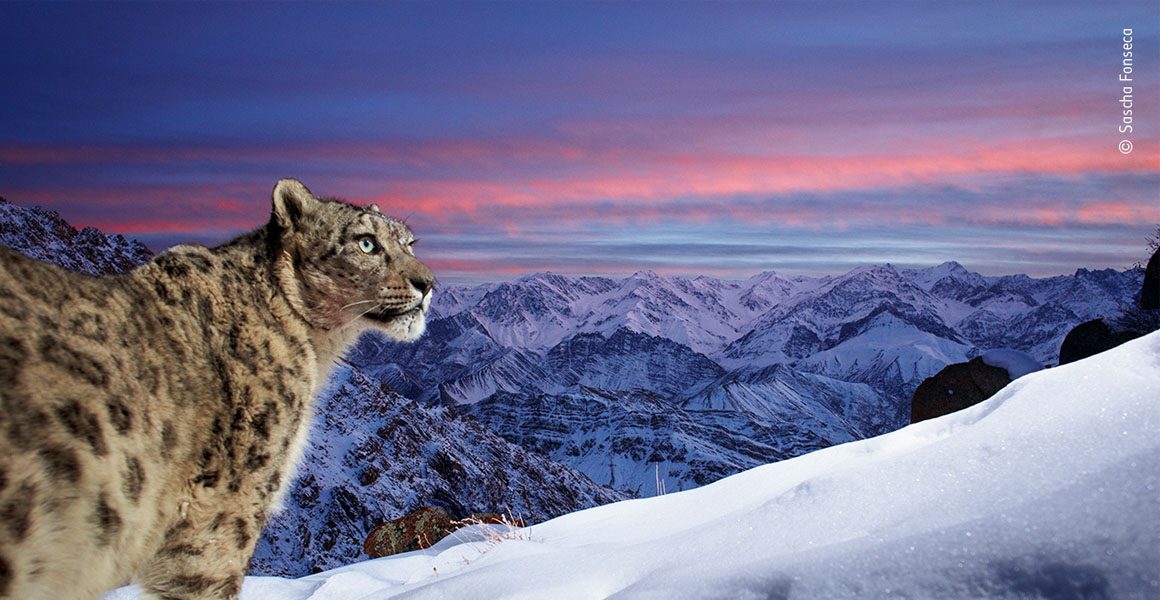
'World of the Snow Leopard' by Sascha Fonseca
The snow leopard's coat means that it is easily camouflaged against its rocky, snowy surroundings, and this combined with the fact that it is active mostly at dawn and dusk makes it very hard to spot. As a result, sightings of snow leopards are rare and mostly occur in winter when they descend from the mountains to hunt, so camera traps are essential.
The photo was taken during a three-year, bait-free, camera-trap project in the Indian Himalayas. Carefully positioned in the mountains of Ladakh in northern India, Sascha's camera trap caught the elusive snow leopard in the perfect pose.
'When everything came together,' exclaims Sascha, 'half of it was good preparation and the other 50% was just luck. To photograph a snow leopard in its natural habitat is already special. To get one close-up in the snow is very special.'
'And to get a wild snow leopard close up in the snow at sunset in front of a breathtaking mountain-scape is probably the ultimate. These rare and wise-looking cats are the stuff of legends and fairytales. In the local language they are referred to as the 'Ghost of the Mountains' because of their legendary ability to blend in with their surroundings.'
'Their incredible stealth ultimately make them probably the most difficult big cats to photograph in the wild. And it‘s this mystery surrounding the beautiful Snow leopard that always fascinated me.'
Coping with the cold
Temperatures in Ladakh regularly fall to -20°C. While these sub-zero temperatures are no issue for the snow leopard, whose thick coat and furry footpads keep it warm, they certainly posed a challenge to Sascha's camera trap.
To overcome this, he developed a specialised, weatherproof casing for it in his kitchen. These DIY improvements meant the equipment survived not only the extreme cold and snow but also animal interference during the year and half it was in place.
'When I first started with this snow leopard project, people said it was crazy and it wouldn't work,' explains Sascha. 'I had to build my own gear. Back then there was no off-the-shelf gear for DSLR camera traps in such extreme regions.'
'And even most equipment that's available today is not really suitable for such high-altitude terrain – it can get very cold and the equipment needs to be sealed and weather-proofed. So, I built my first own boxes for the camera and also for the external flash in my kitchen.'
'I improvised a lot as I didn't know if it would work, but I just tried it, and it worked throughout the seasons and for much longer than I thought. I left it there for three years, even throughout snowstorms and I got these amazing images.'
But it wasn't the only challenge. Sascha also had to contend with high altitudes, low oxygen levels, rugged terrain and snowstorms in order to set up his camera trap.Sascha recalls the many challenges he faced.
'First of all to find the locations, to get the gear up there - sometimes you're very limited on what you can bring,' he explains. 'It's very rugged terrain and there are no roads. There are low oxygen levels, the air is quite thin.'
'That's why I always work with local rangers or scientists, as they know the area best. You also have to maintain the gear, especially the batteries, for a long period of time. Troubleshooting, especially during the pandemic was tough, as I couldn't go myself. I had to do a lot of WhatsApp communication to instruct my local assistant, who I had personally trained on location, on how to fix things, change settings and reposition the camera.'
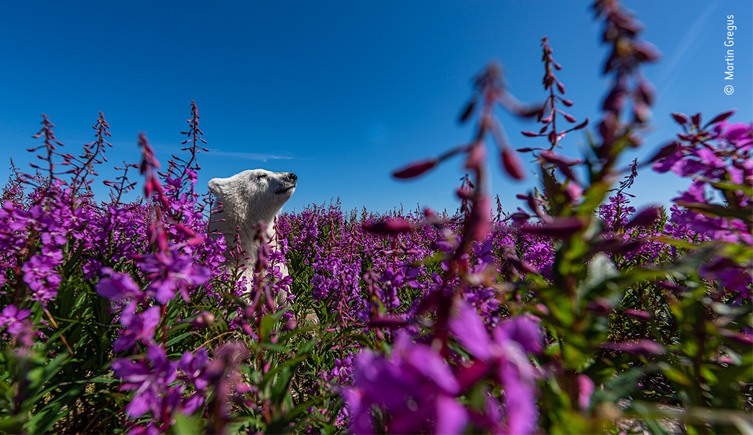
'Among the flowers' by Martin Gregus was Highly Commended in the People's Choice Award.
Inspiring the next generation
Out of nearly 39,000 entries received from 93 countries across the world, the panel shortlisted Sascha's image for the People's Choice, after which it was up to the public to decide. A record 60,466 nature photography fans voted, and the ethereal beauty of the snow leopard and its surroundings clearly resonated with them.
'I’m incredibly proud to be the winner of this year's People’s Choice Award and I thank all the supporters around the world for making this happen,' says Sascha. 'Photography can connect people to wildlife and encourage them to appreciate the beauty of the unseen natural world. I believe that a greater understanding of wildlife leads to deeper caring which hopefully results in active support and greater public interest for conservation.’
Dr Douglas Gurr, Director of the Museum, says, 'This year’s record number of votes illustrates how wildlife photography can engage and inspire audiences with the wonder of nature. A result of dedication and perseverance, Sascha’s remarkable image captures the breathtaking beauty of our planet and reminds us of our shared responsibility to protect it.'
You can see Sascha's winning People's Choice image, along with the four Highly Commended images including 'Among the flowers' which shows a polar bear frolicking in flowers, on display in our Wildlife Photographer of the Year exhibition in South Kensington until 2 July 2023.
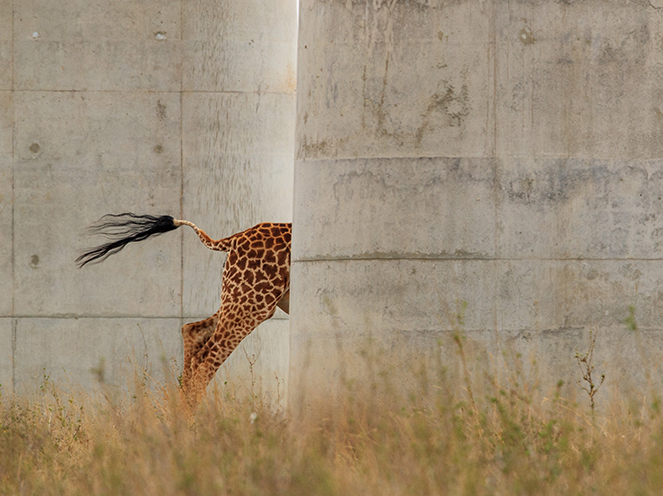
See more photos
Discover the natural world in all its wonder and diversity at the newly redesigned Wildlife Photographer of the Year exhibition
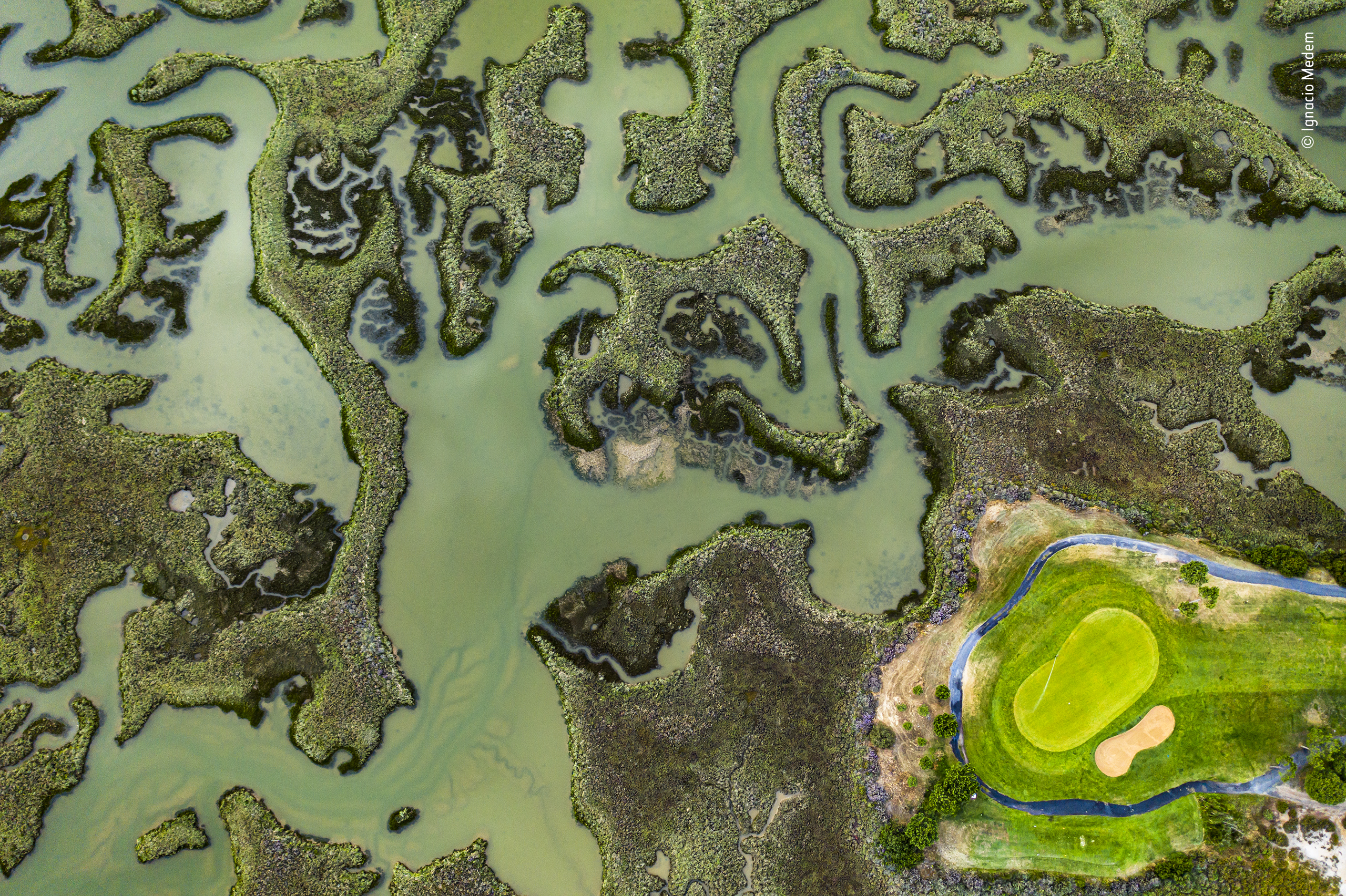

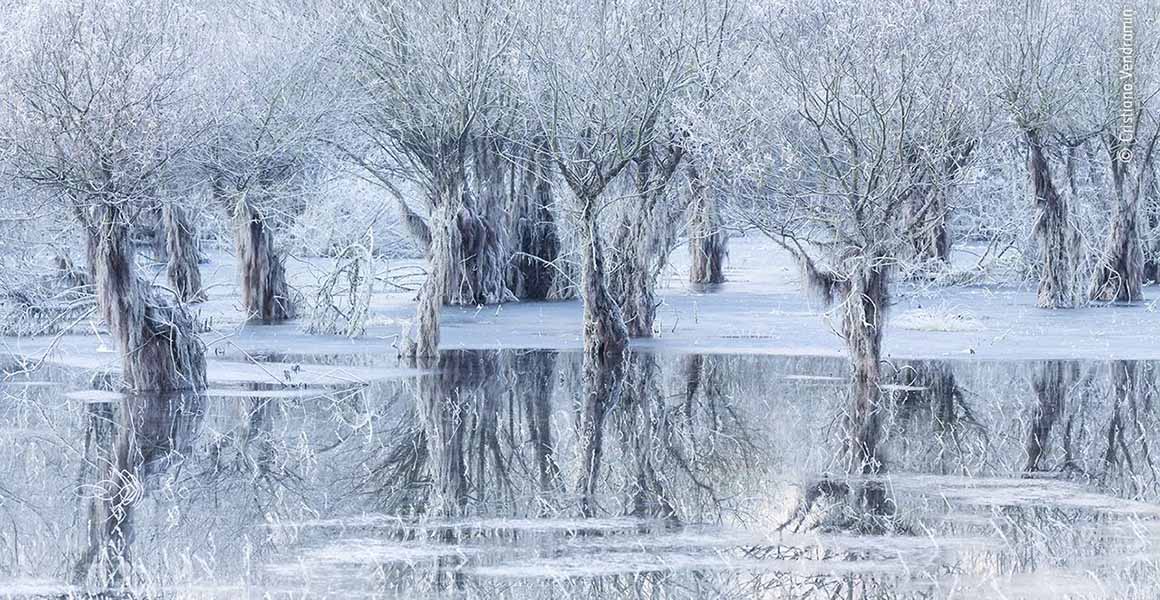
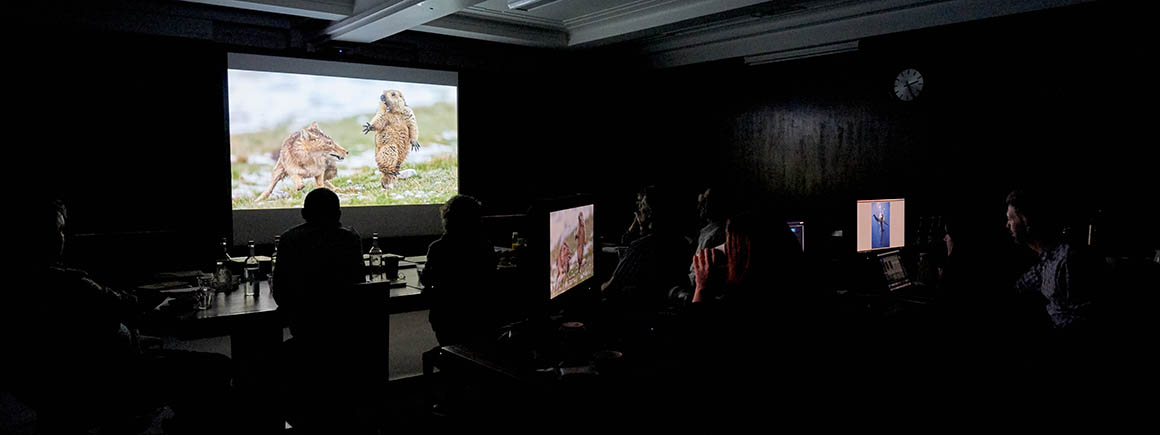
Don't miss a thing
Receive email updates about our news, science, exhibitions, events, products, services and fundraising activities. We may occasionally include third-party content from our corporate partners and other museums. We will not share your personal details with these third parties. You must be over the age of 13. Privacy notice.
Follow us on social media